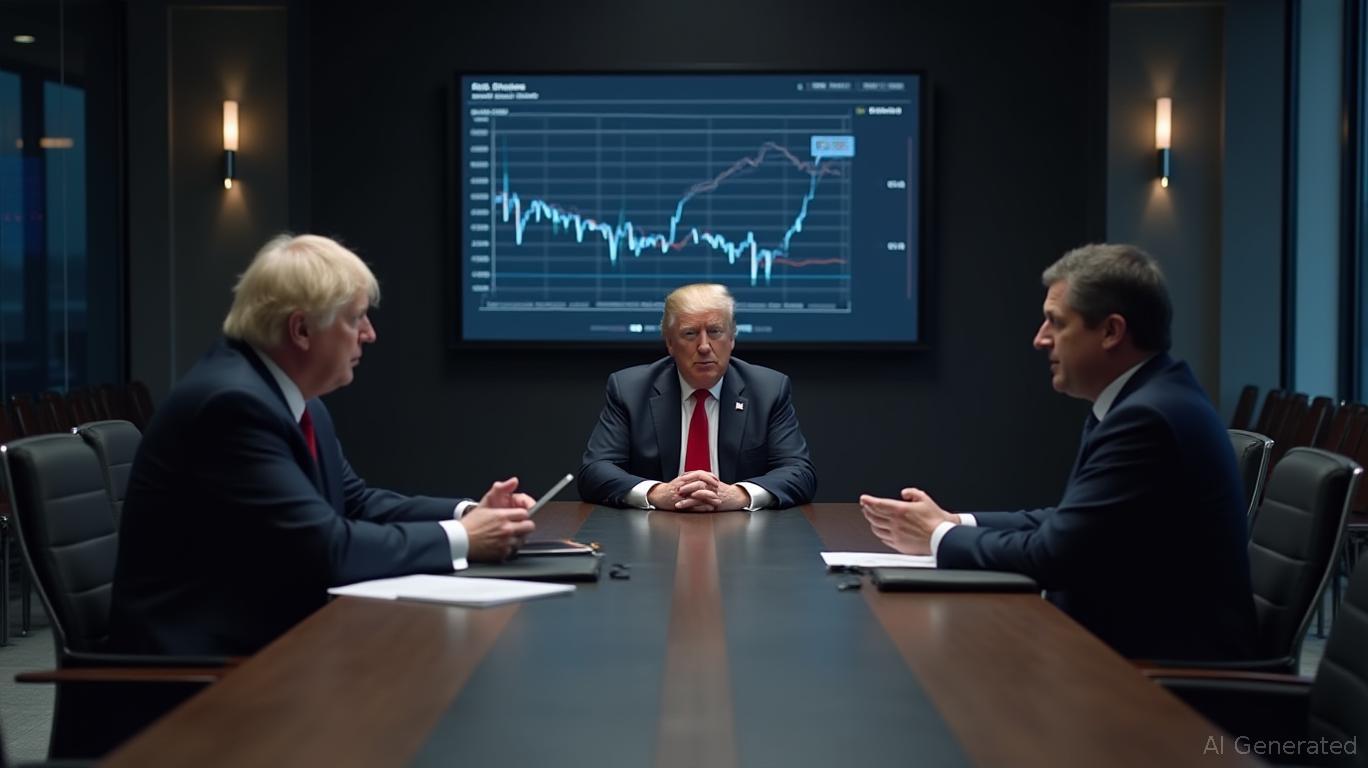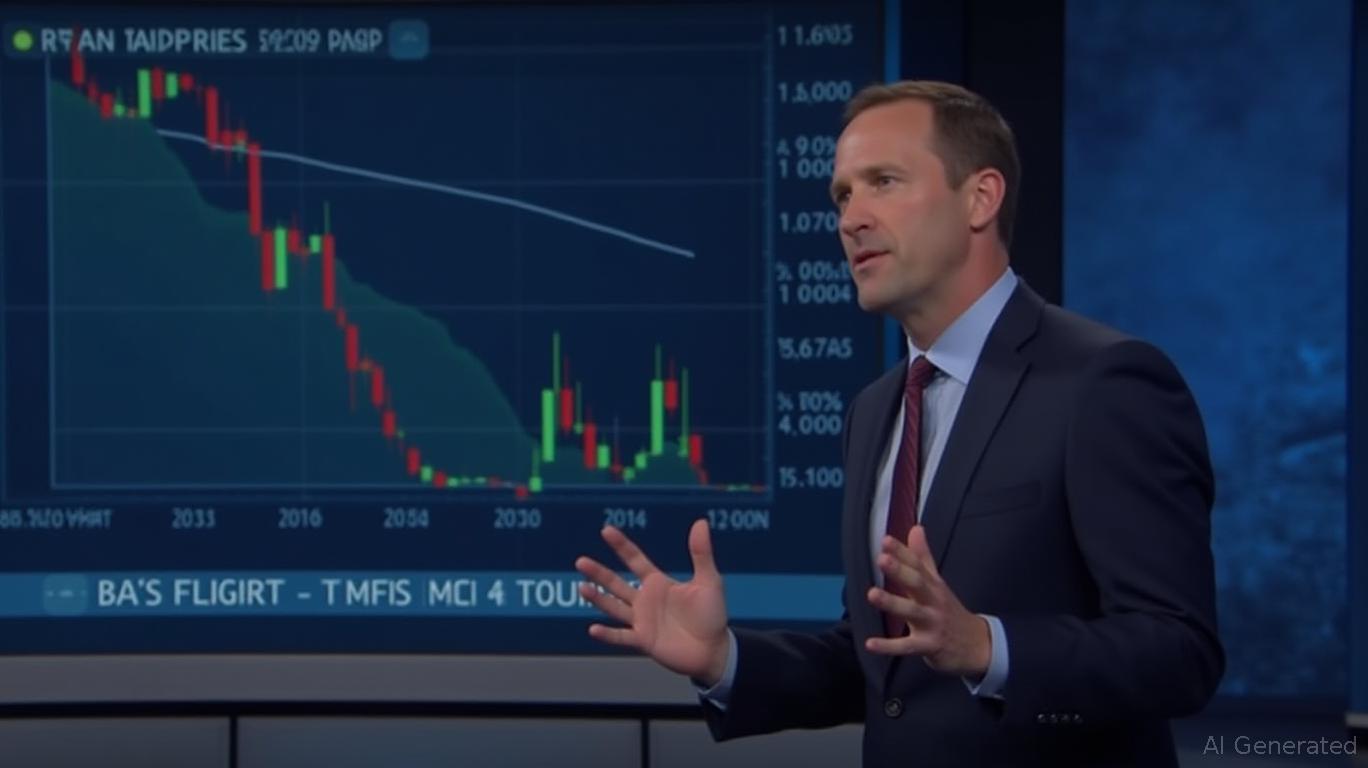U.S.-U.K. Trade Agreement Falters Amid Cultural Differences and Technical Conflicts, Disrupting Trump’s International Agenda
- U.S.-U.K. trade deal faces delays due to technical disputes and cultural clashes, risking Trump’s global strategy. - Initial terms aim to cut tariffs on cars, steel, and aluminum, but unresolved issues like supply chain rules and jet engine exemptions stall progress. - Parallel U.S. negotiations with China and ASEAN nations highlight a shift toward bilateralism, with mixed outcomes on tariffs and trade balances. - British officials resist U.S. demands for relaxed standards, emphasizing reciprocal benefit
The trade pact between the United States and United Kingdom, which President Donald Trump and Prime Minister Keir Starmer have praised as a significant achievement, is encountering increasing obstacles as negotiators grapple with complex final details. Announced in May 2025 after a congratulatory phone conversation between the two leaders, the agreement is intended to lower tariffs on automobiles, steel, and aluminum, and to ease non-tariff restrictions on American exports, according to
The initial provisions of the deal—such as reducing U.S. tariffs on British vehicles from 27.5% to 10% for up to 100,000 cars per year, and removing duties on steel and aluminum—were initially hailed as groundbreaking. However, unresolved matters like supply chain regulations and special allowances for jet engines produced in Britain have led to a stalemate, the Times noted. U.S. Trade Representative Jamieson Greer and Commerce Secretary Howard Lutnick have faced criticism for failing to coordinate their approaches, which has further complicated the talks, according to the Times. On the British side, officials have resisted U.S. requests to loosen product regulations, arguing that such changes could harm their own industries.

Meanwhile, the U.S. trade agenda extends beyond the U.K. At the same time, Trump and Chinese President Xi Jinping are preparing to conclude a trade framework agreement ahead of their summit in South Korea, with the U.S. Treasury expecting both an extension of the tariff ceasefire and renewed Chinese purchases of American soybeans, as reported by
At the same time, Trump’s visit to Asia, including his attendance at the ASEAN summit in Malaysia, highlights the administration’s intent to reshape international trade relations. The U.S. has imposed tariffs ranging from 10% to 40% on goods from Southeast Asia, prompting ASEAN countries to seek formal agreements to cushion the blow, as reported by Rappler. For example, Thailand’s trade surplus grew to $1.28 billion in September 2025, fueled by a 19% annual increase in exports. Nevertheless, the region remains cautious about U.S. protectionist policies, a sentiment reinforced by Trump’s sudden withdrawal from trade discussions with Canada following a controversial advertisement quoting Ronald Reagan’s anti-tariff remarks, as shown in
If completed, the U.K.-U.S. agreement could become a template for Trump’s broader trade approach, combining targeted tariff retaliation with selective compromises. British authorities have pointed out that the deal would provide mutual advantages, such as greater U.S. ethanol exports and wider access for American pharmaceuticals within the NHS, according to the Times. Still, with American negotiators waiting for final documents from London and ongoing disputes over issues like whisky tariffs, the timeline for reaching a signed deal remains unclear, the Times reported.
As Trump steers these negotiations, his administration’s strategy signals a wider move toward bilateral agreements, focusing on advancing U.S. economic priorities while navigating global political tensions. The next several months will reveal whether these efforts can yield lasting trade deals or further unsettle the international trading system.
Disclaimer: The content of this article solely reflects the author's opinion and does not represent the platform in any capacity. This article is not intended to serve as a reference for making investment decisions.
You may also like
Bitcoin News Update: The Appeal of Bitcoin Compared to Liquidity Concerns: S&P Removes Strategy from Index
- S&P Global downgraded Strategy Inc. to junk status, removing it from the S&P 500 due to heavy crypto exposure and liquidity risks. - The company holds 640,808 BTC ($74B) but faces $15B in convertible debt, risking asset liquidation if Bitcoin prices drop. - CEO Michael Saylor remains bullish, aiming for a $2T Bitcoin portfolio by 2040 despite market volatility and mixed crypto treasury results. - JPMorgan and others are adapting to crypto, allowing digital assets as loan collateral, signaling growing ins

Uniswap News Today: MetaMask Token Buzz Highlights Drive Toward Ecosystem Decentralization
- MetaMask's potential token "MASK" speculation intensified after a password-protected claim portal emerged, raising 2025 launch odds to 35% on Polymarket. - Consensys CEO Joe Lubin hinted at a token as a "step toward decentralization," while a $30M loyalty program suggests ecosystem expansion efforts. - Co-founder Dan Finlay warned against phishing risks, emphasizing official channels for any token distribution amid past fake claim site attacks. - Market reactions highlight crypto volatility, with MetaMas

Pudgy Penguins' Price Rally Resembles 2020 DeFi Boom with $0.026 Milestone Approaching
- Pudgy Penguins (PENGU) surged past a falling wedge pattern, targeting $0.026 as key resistance amid rising on-chain accumulation and technical strength. - High-net-worth investors accumulated 2.16M PENGU weekly, aligning with a bullish cup-and-handle breakout validated by expanding volume and RSI momentum. - Market optimism grows with Kung Fu Panda collaboration, $1.34B market cap, and $111M daily volume, though $0.018-$0.020 support remains critical for sustained gains.

Ethereum News Today: Ethereum Surpasses Bitcoin in Institutional Uptake as Companies Seek Better Returns and Enhanced Efficiency
- Ethereum's institutional adoption outpaces Bitcoin as corporate treasuries accumulate 5.98M ETH (4.94% of supply), driven by yield opportunities post-Proof-of-Stake transition. - BitMine Immersion's 77,055 ETH purchase (3.31M total) and SharpLink Gaming's $78.3M ETH buy highlight growing corporate demand amid easing trade tensions and rising ETH prices. - Market analysis notes $4,270 as critical resistance level, with $650M short positions at $4,100 reflecting cautious optimism despite record corporate E
